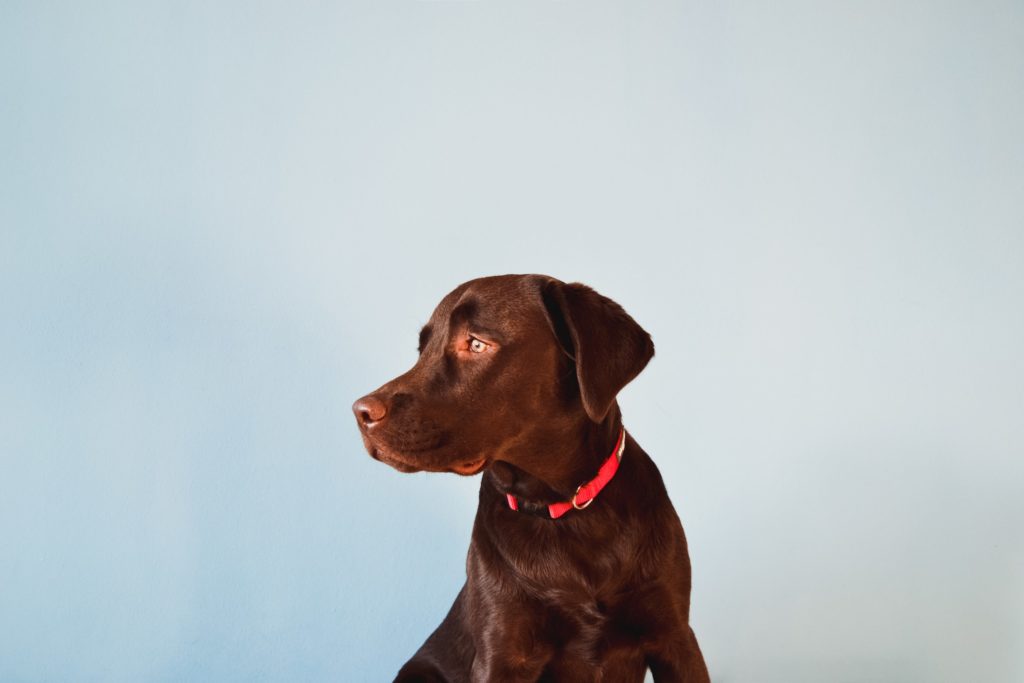One of the most common problems in dogs is worms.
From tapeworms to roundworms and hookworms, there’s several categories they call fall into. Ringworm; however, isn’t really a worm. The skin fungus infection is spread through direct contact, making it very contagious. Although it isn’t life-threatening, it does require veterinary advice.
In this post, we’re discussing what ringworm is and how you can spot the symptoms.
What is Ringworm in Dogs?
It’s considered a fungus but gets its name from its round and raised appearance, looking similar to human ringworm.
Ringworm, also called dermatophytes, can be caused by a variety of types of fungi:
- Microsporum canis
- Microsporum gypseum
- Trichophyton mentagrophytes
A dog or other animals can get ringworm when they come into contact with an infected object, person or animal. These fungal spores can be “spreadable” for up to 18 months. It’s typically transferred through hair when it sheds or breaks off.
This is usually where it’s seen on dogs: in hair follicles, the outer layer of skin and sometimes the nails. The infection only happens outside the body (meaning that it doesn’t affect them on the inside).
You should also know that some dogs are more likely to have bigger ringworm infections than others:
- Puppies
- Senior dogs
- Dogs who are immunocompromised
4 Dog Ringworm Signs: How to Know If Your Dog is Infected
Knowing the signs of ringworm in dogs can make it easier for you to diagnose and treat the issue. If you read these symptoms over and think your dog has ringworm, you can contact your vet to confirm the condition and check that any remedies don’t conflict with current medication.
#1 Circular Hair Loss
If you notice hair loss on your dog that appears to occur in a circular pattern, it could be ringworm. You may notice one patch as it starts, or there may be a couple areas if it’s spread. The size of the circles also varies.
#2 Patchy, Scabby Skin
If the circular hair loss grows, it can start to heal in the center. This can look patchy. Other times, it may become scabbed over or look inflamed.
#3 Dry and Easy-to-Break Hair
When the hair follicles become infected with ringworm, the hair can become brittle and easier to break off than usual. Unfortunately, as we discussed, this is largely how ringworm is spread. The drier the hair becomes, the easier it is to break off, come into contact with other people or animals, and spread to them too.
#4 Brittle Claws
Although it’s rarer, it’s possible for ringworm to infect the claws too. When this happens, you may notice them rougher than usual. Just like hair, they can become brittle and weaker.
4 Dog Ringworm Treatment Options
As soon as you see the symptoms, you’ll wonder what to do when your dog has ringworm. The first thing to know is that these signs can also be associated with other conditions. For example, skin problems could signal a bigger issue such as Cushing’s disease. Other causes could be a nutrient imbalance or allergies.
To be sure, it’s always good to have a vet take a look, especially if the issue seems to reoccur.
Once you know it’s ringworm, you’ll need to treat the infection so it doesn’t spread on your dog or to other people or animals in the house. Treatment will depend on how severe your dog’s case is.
There’s a few treatment options.
#1 Home Remedies
Some people try out a dog ringworm home remedy before using other methods. However, you should still be sure the remedy won’t impact other medication your dog is taking. Possible home remedies include apple cider vinegar, goa powder, mustard seed and more.
#2 Topical Products
A vet may recommend a medicated shampoo, cream or ointment that you can apply to your dog’s skin. It can take months for the infection to fully clear.
#3 Oral Medications
Typically, medication is used with a topical product listed above. These can help fight off fungi, but still need to be used for a couple months in some cases.
#4 Prevent Contamination
If your dog has ringworm, he can spread it through spores that are in hair follicles when he sheds. Since these can be “spreadable” for months, it’s possible your dog can keep getting re-infected. This is why keeping areas clean and hair-free is essential.
Although it can be difficult (especially with a dog who sheds a lot), keeping furniture, brushes and clothing clean will help. This incudes sweeping or vacuuming and using a disinfectant when mopping. If this poses too much of a challenge, some people choose to confine their dog to certain areas of the home that are easier to clean until it’s fully cleared.
Summary on Dog Ringworm
Ringworm appears as circular areas of hair loss, often accompanied by scabby skin or brittle hair or nails. Although these symptoms could mean something else, it’s important to treat the fungus if your dog has it. Although it doesn’t have life-threatening risks, it can spread to other animals or humans in the home. You can choose a home remedy, topical medicated product, or oral medication. It’s also important to prevent spread by keeping the home clean.

